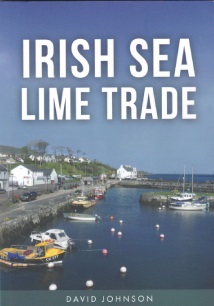Maritime mystery tour
Irish Sea Lime Trade, by David Johnson
Landing page image: The Express loading limestone at Lydstep Haven beach (taken from Irish Sea Lime Trade)
 Nautilus regularly has to remind the British public that 90% of their goods arrive by sea, but there was a time when the nation's reliance on its merchant fleet was much better understood.
Nautilus regularly has to remind the British public that 90% of their goods arrive by sea, but there was a time when the nation's reliance on its merchant fleet was much better understood.
It's this message that runs through Irish Sea Lime Trade, the story of a period in Britain and Ireland's industrial history when it was obvious to all that sea transport was the best way to move cargo.
Author David Johnson starts by explaining the importance of the substance lime – or quicklime – which is produced by 'calcining' limestone in a kiln. Lime was used in mortar for building as long ago as Roman times, and gained popularity as a soil improver for farmers in the medieval period.
In response to increased demand in the 17th century, more quarries and kilns were established in limestone-rich coastal areas, and manufacturers and shippers around the Irish Sea gradually formed a network that made the region well-known for its lime trade.
The trade started to dwindle in the 19th century, so most kilns and docks were abandoned or repurposed, but there is still evidence if you know where to look.
In his attractively-presented book, Johnson takes us on a tour from South Pembrokeshire up to the Solway Firth, and across to the Isle of Man and Ireland. The author uses colour pictures and vivid descriptions to lead us to places where remnants of the Irish Sea lime trade can still be spotted, and tells the stories of the individual locations.
Irish Sea Lime Trade
By David Johnson
Amberley, £15.99
ISBN: 978 13981 22154
Buy this book in the Nautilus Bookshop
While you're there, why not browse the rest of the titles in our unique maritime bookshop, which sells all the books reviewed on these pages.
Buy nowMore Books
The precarious path from piracy to prosperity
The Resurrected Pirate, by Craig S ChapmanThe Resurrected Pirate is a remarkable story told in an engaging way, illustrating for the modern reader the desperately narrow passage between life and death that a seafarer in this period might have to navigate.
Carving out a career
Ships' Figureheads: Famous Carving FamiliesThe decoration of ships with figureheads was a way to present the might of military and mercantile power for centuries. These days, the skills needed to make these sculptures are kept alive by experts such as Andrew Peters, who has worked on restoration projects such as the Cutty Sark tea clipper.
Knotty problems solved
The Knot Bible: The Complete Guide to Knots And Their Uses by Nic ComptonKnot-tying is a vital competency skill for seafarers, and this expanded edition of The Knot Bible by Nic Compton offers guidance on over 200 knots and their practical uses.
Why it's nice to splice
Splicing modern ropes, 2nd edition: a practical handbook by Jan-Willem PolmanSplicing rope is as an essential skill for seafarers as tying a knot, but some skills are disappearing. This definitive guide on why splicing gets more from your rope is a great stocking filler for all boaters, whether recreational or commercial.
